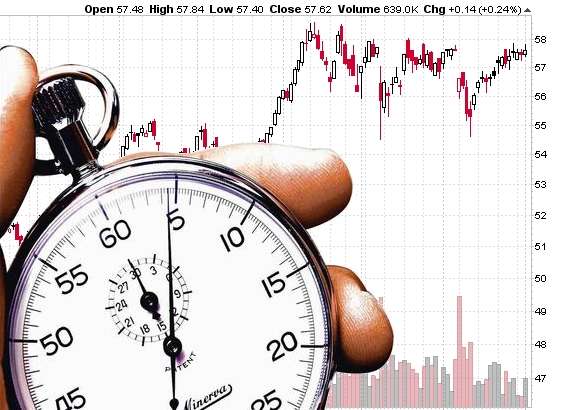Last week, I penned a quick reminder on why you should keep your SIPs going, especially when you are building a long-term equity-tilted portfolio. True, some of you are well aware of the benefits of keeping a SIP in motion through ups and downs and nothing new need be said.

But for all our new investors, it helps to take a leaf out of the past to drive home the gravity of the point, given that we are going through volatile times again.
Yes, it helps to keep your SIP going in tough times. But if you are savvy and want to make the most of turbulent markets, what do you do? You have more cost averaging tools beyond SIPs.
Setting triggers
For a very seasoned investor, looking at equity market valuations could be one tool to invest on lows. Even if you could, would you have the time to quickly spot it and buy?
This is where trigger options can be a handy tool. A trigger set in early 2009 for a Sensex fall of below 8500 would have fetched you 120-130% absolute returns or about 30% compounded annually till date!
Whether you have knowledge about market valuations or not, nothing prevents you from having your view on whether a fall is good enough to ‘buy on dips’.
Setting a trigger option in your FundsIndia account would mean choosing a Sensex level or your own fund NAV level to buy or sell. For instance, you may set a trigger to buy into a fund (for a certain amount) when Sensex closes below say 17,000.
The transaction will either be done automatically or at least alert you, if the trigger is activated.
If market levels are too much for you, your own NAVs can be a deciding factor. For instance, if your NAV is today at Rs 25, you may decide Rs 21.25 (15% below your current NAV) can be a good time to buy in dips.
But here a few quick tips to ensure you don’t hurt yourself with this tool:
– When your NAV falls, make sure it is because the market is also falling and not because something is wrong with the fund (and the market is actually up!).
– One way to avoid this trap is to set triggers on index funds. If you are not an adventurous investor then buying into indices can be a good option in market falls of say 5-10%.
– It is important to set realistic amounts of investment when you use a trigger. Going overboard can be risky
– Set the trigger when you see the possibility of an event approaching. Setting a Sensex level of 5000 now, can be unrealistic
– Keep the trigger window (period for which trigger is set up) open for reasonable time frame. Once a trigger is activated and executed, check whether you need to keep that option open for more activation or close it.
You can have triggers in existing funds and new funds and also have STPs. And remember, they can be used not only to buy but also to sell/book profits in funds on market peaks.
These triggers (at FundsIndia) can either be automated or done only when you confirm to an alert you get (if you want to make sure that it is indeed a good time to set the trigger off).
Also note that there would be minimum amounts mandated for these tools. Please read more details about this option in our knowledge centre: Trigger Option
Who can use: This option is fit for investors who have some knowledge about markets or understand what can be a good level to average their portfolio cost or sweep out extraordinary profits. It is also necessary that investors maintain sufficient balance in their bank accounts in case such mandates are automated.
Flexi SIPs
Another, more manual option, available to investors is the Flexi SIP. While flexi SIP allows you to keep varying your SIP amounts based on your affordability, it can also used for nuanced equity investing, based on market conditions.
Flexi SIPs merely allow you to invest a minimum amount every month, with an option to invest more on months you choose (subject to a maximum limit set by you in the beginning of the SIP). This means, you can change the SIP amount on months you feel you can buy more on market corrections.
But such a change has to be done at least 7 days (with FundsIndia) before your slotted SIP date. If not, the minimum amount will in any case keep ticking. The change will hold good only for that single month and the SIP will revert to its minimum from the next month. Of course, this option is for your existing investments.
Who can use: If your purpose of using flexi SIPs is to invest based on market movements, then you have be a person tracking the equity markets. Blind averaging may even result in throwing money in an underperforming fund. For instance, higher investments through flexi SIPs in an infrastructure fund in the last few years’ volatility may not have fetched more.
Read more about flexi SIPs: Flexi SIPs
Value-averaging Investment Plan (VIP)
Value averaging is a variant of SIP. While SIP allows you to buy regularly for a fixed sum, VIP allows you to vary your investments based on an expected return. The factors in play here are an initial amount, a minimum investment amount, a maximum amount and a return expected. If in a month, the returns fall short of your expected returns more money is invested and vice versa.

Simply put, when your fund is down, you invest more. You invest less when your fund is up. That means, when the fund is rallying well, you don’t buy more at higher prices.
This way you are more effectively averaging your costs. VIP is used world over and has proved to deliver slightly higher returns than SIPs (Read more on:VIP-FundsIndia)
But you should exercise caution while executing VIPs
– If you are investing with a goal in mind, VIP can cause uncertainty in terms of planning for the goal as investment keeps varying. Ensure that the minimum amount of the VIP is what you consider for calculating your goal. Anything above that can be treated as a means to fast-tracking your goals.
– VIP can be often risky when done on theme funds or mid-cap focused funds.You may end up throwing good money after bad
– You need to have a good cash balance to execute VIP transactions. Set aside your bank balance accordingly or ensure you get alerts.
Read about how to set up a VIP in:VIP Option
Who can use: VIP is suited for more sophisticated investors and those with deep pockets. Also, such investors need to ensure that they have a regular systematic investment plan in place to ensure that their goals do not suffer because of the varying amounts invested.
Cash for tactical allocation
It’s possible that you wish to invest on dips but do not have the funds to, especially when you use triggers/flexi SIPs. This is when parking, say 10% of your total investments, in liquid funds comes to your rescue. You can quickly do an STP in such times.








I think triggers based absolute index levels are not worthwhile. 17,000 Sensex trigger would mean nothing in future (If and when Sensex EPS goes past say 1,700-1,800) 🙂
The trigger that you need to design has to be based on some valuation parameter (PE, PB, Div Yield, Price/ Sales etc)
e.g. Continue SIP when Nifty PE between 17-20, Add 1,000 to SIP amount if Nifty PE below 16 or reduce 1,000 from SIP amount if Nifty PE goes above 20 or Stop SIP if Nifty PE>22, or some such algo. You can define a basic matrix/ default matrix and allow users to play around. This will make sure investor buys more when valuations are low and buy less or nothing if they are expensive
If you feel you will lose SIP AUM during market exuberance/ peaks, you can design a portfolio SIP trigger. So Investor has to choose an Equity fund and a Debt fund. The amount which has been cut from Equity SIP can then go to Debt Fund
You can also explore triggers based on 200 DMA or such other technical parameters (there will be a few people who swears by these)
I think as a standalone, focused player in MF, you should be innovative with these kind of things.
I had asked my broker (a private bank ) multiple times in the past to devise such triggers but nothing came out. So I have to do this manually, terrible but worthwhile
Hopefully someone will implement it!
Kamlesh,
A very nice and valid point, given the fact that Nifty hovering below 15 would mean a lot of scope for increasing SIP and above 22, 23 would mean to reduce them.
I generally use this strategy to buy in Nifty Futures….
This was very informative Vidya. Thanks a lot !!!!
I do not understand flexo sip system.It has to be done 7 days before SIP date.I feel any change in the stock market purchase is to be acted immediately as no one know what will be the market position after 7 days.
Pl throw more light how flexi sip will help the investor.
Hello Mr Dabholkar, timing SIPs based on exact market levels can be done using triggers. They are more effective than flexi SIPs for the purpose you are mentioning.
Flexi SIP is suitable for prolonged periods of market under performance. Take 2013 till date; market has been moving sideways and you may wish to invest more. In such a case you can up your investment in your fund through flexi SIPs. Hence, for market levels use triggers and for simply increasing your investment when you see market under performance use flexi SIPs.
Also, the idea of thse investments is not to time flash crashes. If there is a market downturn, it will offer reasonable time frame for you to invest. Take March 2009. It is not that you need to have invested exactly on the low of March 9 to benefit. Even an investment in April would have given you good returns. In fact many mutual funds started increasing their equity holdings only over April and May 2009 and still made good returns. Tks, Vidya
Vidya,
Nice and commendable job.
I have been reading through your posts, they are straight to point and very lucid.
Why can’t you come up with an article to choose mutual funds based on the parameters they are actually gauged, such as, Alpha (earning potential), Beta (Risk involved), Sharpe Ratio…. etc.
This will help people a lot in identifying and selecting best funds in the market.
Please give a thought over this.
Hello Sunil, Thanks for your suggestion. We will certainly keep the idea in mind. Tks, Vidya
BOOK FULL PROFIT IN IDEA FUT TARGET 2 IS ACHIVED
Equity Tips
I do not understand flexo sip system.It has to be done 7 days before SIP date.I feel any change in the stock market purchase is to be acted immediately as no one know what will be the market position after 7 days.
Pl throw more light how flexi sip will help the investor.
Hello Mr Dabholkar, timing SIPs based on exact market levels can be done using triggers. They are more effective than flexi SIPs for the purpose you are mentioning.
Flexi SIP is suitable for prolonged periods of market under performance. Take 2013 till date; market has been moving sideways and you may wish to invest more. In such a case you can up your investment in your fund through flexi SIPs. Hence, for market levels use triggers and for simply increasing your investment when you see market under performance use flexi SIPs.
Also, the idea of thse investments is not to time flash crashes. If there is a market downturn, it will offer reasonable time frame for you to invest. Take March 2009. It is not that you need to have invested exactly on the low of March 9 to benefit. Even an investment in April would have given you good returns. In fact many mutual funds started increasing their equity holdings only over April and May 2009 and still made good returns. Tks, Vidya
This was very informative Vidya. Thanks a lot !!!!
Vidya,
Nice and commendable job.
I have been reading through your posts, they are straight to point and very lucid.
Why can’t you come up with an article to choose mutual funds based on the parameters they are actually gauged, such as, Alpha (earning potential), Beta (Risk involved), Sharpe Ratio…. etc.
This will help people a lot in identifying and selecting best funds in the market.
Please give a thought over this.
Hello Sunil, Thanks for your suggestion. We will certainly keep the idea in mind. Tks, Vidya
BOOK FULL PROFIT IN IDEA FUT TARGET 2 IS ACHIVED
Equity Tips
I think triggers based absolute index levels are not worthwhile. 17,000 Sensex trigger would mean nothing in future (If and when Sensex EPS goes past say 1,700-1,800) 🙂
The trigger that you need to design has to be based on some valuation parameter (PE, PB, Div Yield, Price/ Sales etc)
e.g. Continue SIP when Nifty PE between 17-20, Add 1,000 to SIP amount if Nifty PE below 16 or reduce 1,000 from SIP amount if Nifty PE goes above 20 or Stop SIP if Nifty PE>22, or some such algo. You can define a basic matrix/ default matrix and allow users to play around. This will make sure investor buys more when valuations are low and buy less or nothing if they are expensive
If you feel you will lose SIP AUM during market exuberance/ peaks, you can design a portfolio SIP trigger. So Investor has to choose an Equity fund and a Debt fund. The amount which has been cut from Equity SIP can then go to Debt Fund
You can also explore triggers based on 200 DMA or such other technical parameters (there will be a few people who swears by these)
I think as a standalone, focused player in MF, you should be innovative with these kind of things.
I had asked my broker (a private bank ) multiple times in the past to devise such triggers but nothing came out. So I have to do this manually, terrible but worthwhile
Hopefully someone will implement it!
Kamlesh,
A very nice and valid point, given the fact that Nifty hovering below 15 would mean a lot of scope for increasing SIP and above 22, 23 would mean to reduce them.
I generally use this strategy to buy in Nifty Futures….